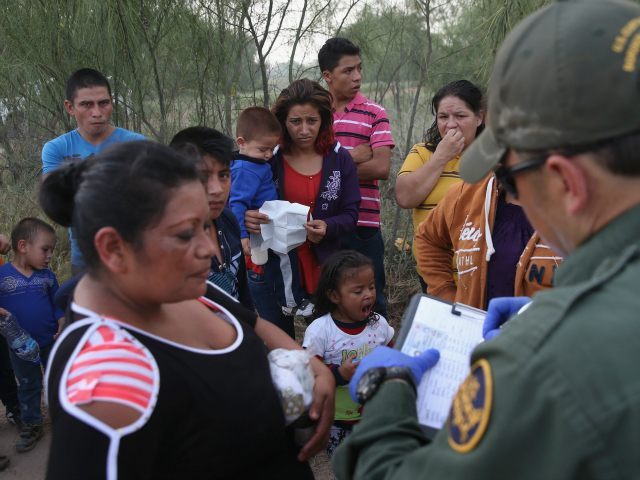Human traffickers have used work-visas and fiancé visas during the last decade to improperly get people into the U.S., according to an audit from the Department of Homeland Security’s Office of Inspector General.
“Work and fiancé visas were the primary means by which 17 of 32 known traffickers brought victims into the United States,” read the OIG audit of agency data from 2005 to 2014. The 15 other cases were instances in which the victim either entered the U.S. illegally or overstayed their visas.
“[F]iancé visas were used to lure human trafficking victims to the United States as part of marriage fraud schemes,” the report reads. “The traffickers confiscated the victims’ passports and subjected them to involuntary servitude, forced labor, and/or forced sex. In one case, upon arrest and prosecution, three individuals pled guilty to marriage fraud, forced labor trafficking, and forced labor organization. Suspects involved in another case were not prosecuted due to a lack of sufficient evidence.”
Additionally the audit found that 274 individuals under investigation for human trafficking were able to successfully bring 425 family members into the country legally. The audit, based on the available data, was unable to confirm whether these cases were instances of human trafficking.
“Family reunification visas also were possibly used to bring victims into the country,” the audit reads. “From 2005 through 2014, 274 of over 10,500 (3 percent) of the subjects of ICE [Immigration and Customs Enforcement] human trafficking investigations successfully petitioned USCIS [United States Citizenship and Immigration Services] to bring family members and fiancés to the United States.”
According to the audit, the ICE data could not provide information on how many of the 274 visa petitioners were human traffickers, but. the audit said, 18 of the 274 were arrested for “trafficking-related crimes.”
The OIG’s audit sought to determine how people charged or convicted of human trafficking were able to use the legal immigration system to bring their victims into the U.S.
According to the OIG, a lack of sufficient communication between ICE and USCIS, plus incomplete data, provided a vulnerability in the legal process for human traffickers to bring in victims. Ironically, the audit pointed to ineffective use or incomplete collection of data for T- and U- visas — which are visas granted to victims of crimes like human trafficking.
“Our review of USCIS case-files identified instances where children who were sold, brought to the United States, and forced into involuntary servitude named the perpetrator as well as other potential victims in their T visa application. Although this information was extremely important, it was not captured in the USCIS database,” the report reads.
The OIG made three recommendations:
Recommendation 1: Develop and implement procedures to capture the names and other identifying information on human traffickers found in victims’ statements, which are submitted with T and U petitions, in USCIS information systems.
Recommendation 2: Collaborate with ICE to institute a mutually acceptable procedure for transferring USCIS data on alleged human traffickers to ICE.
Recommendation 3: Collaborate with USCIS to identify a mutually acceptable procedure for obtaining names and other identifying information on alleged human traffickers that is available in USCIS systems.
ICE and USCIS concurred, saying they would address OIG’s recommendations.

COMMENTS
Please let us know if you're having issues with commenting.